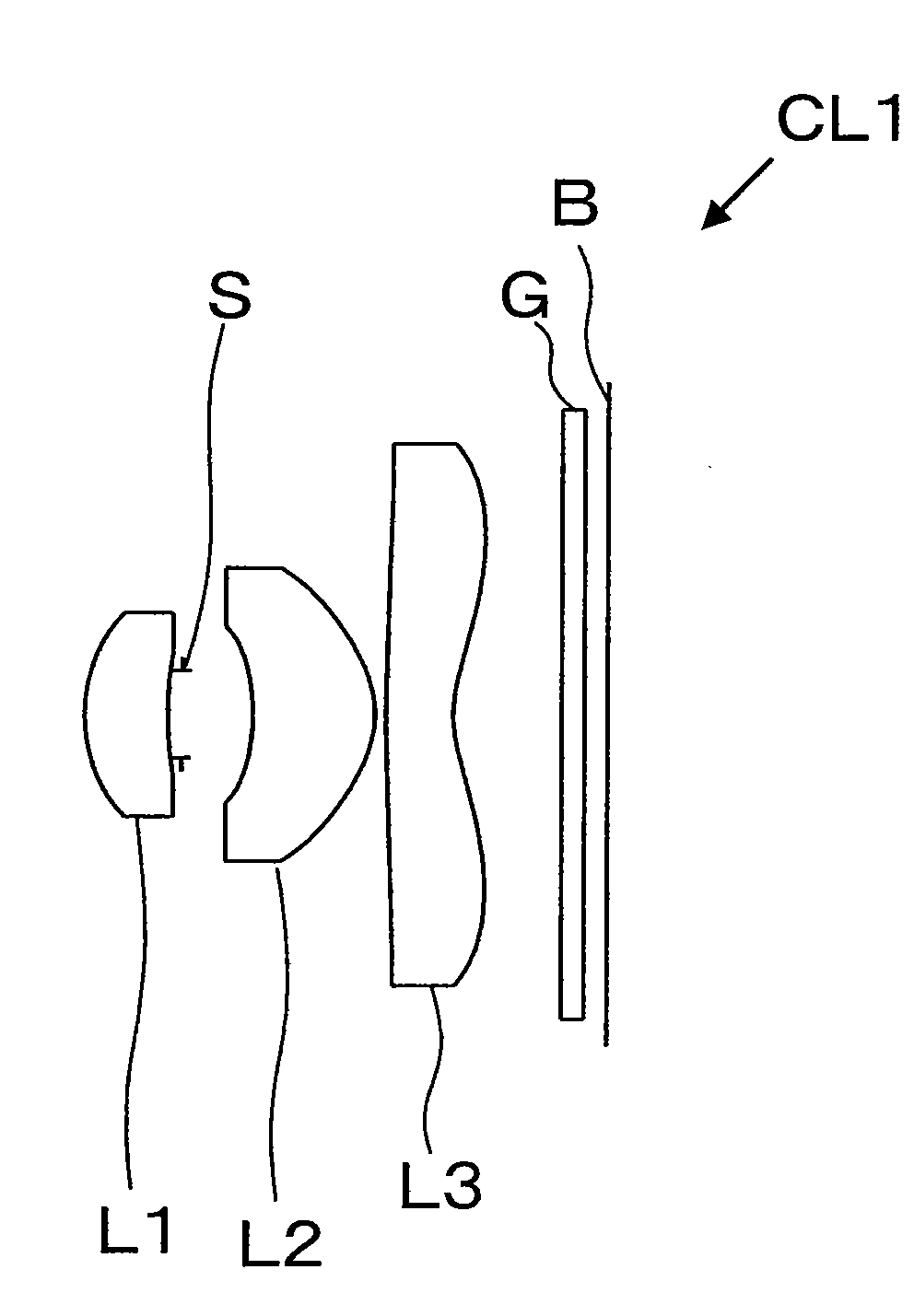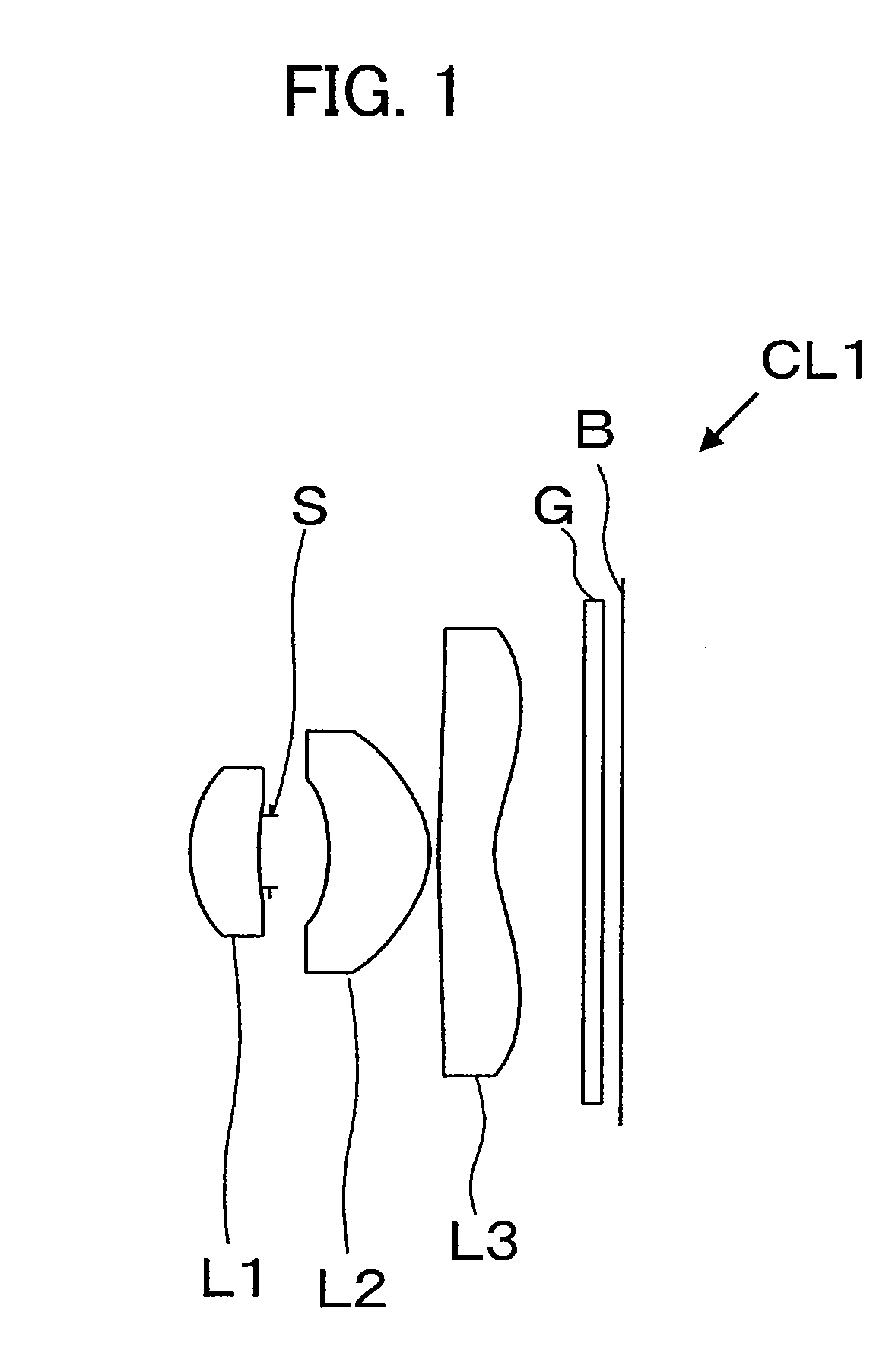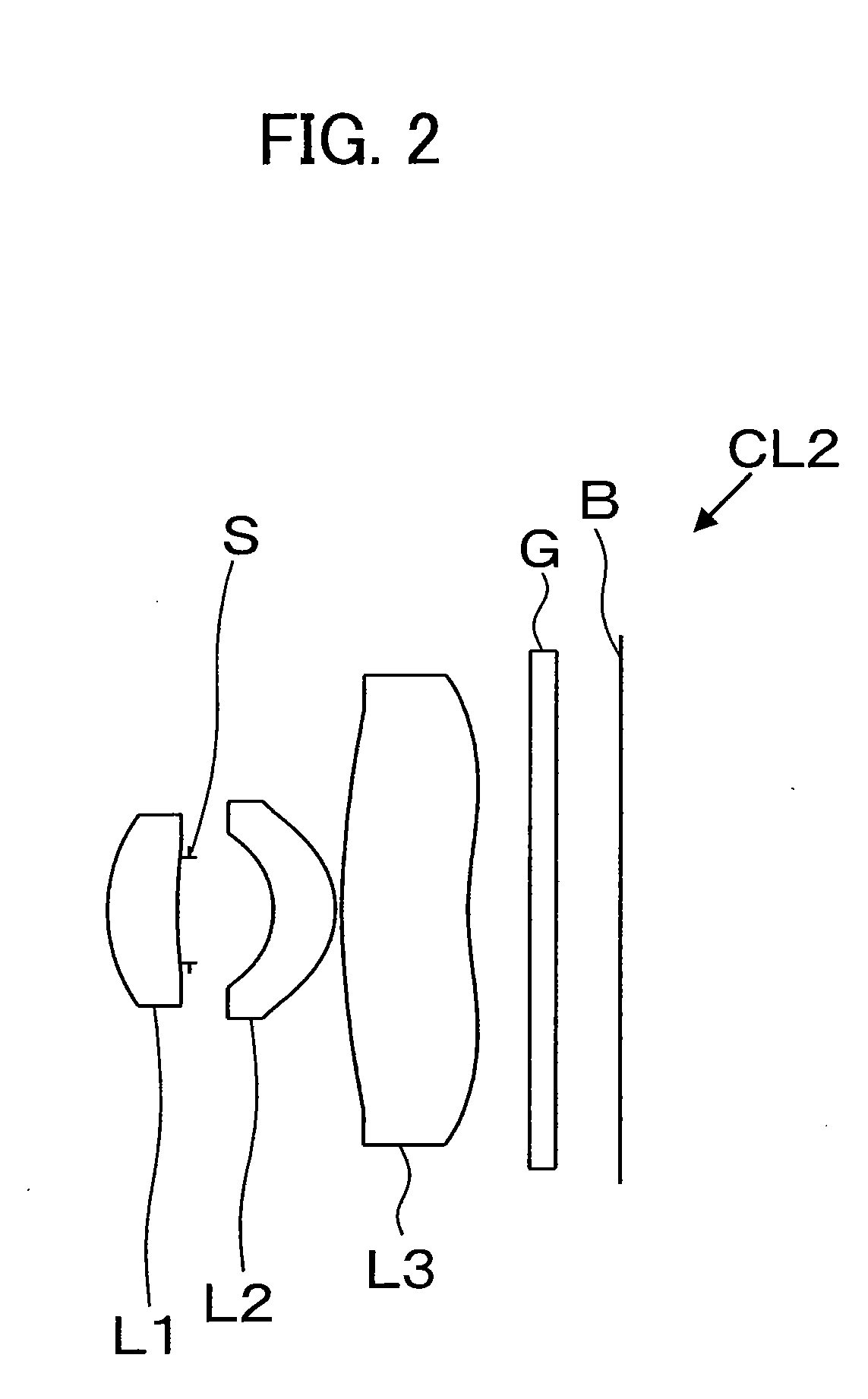Imaging lens
a technology of imaging lens and lens body, applied in the field of compound imaging lens, can solve the problems of large astigmatism of about 0.1 mm, aberration that unfortunately requires further compensation
- Summary
- Abstract
- Description
- Claims
- Application Information
AI Technical Summary
Benefits of technology
Problems solved by technology
Method used
Image
Examples
first exemplary embodiment
[0057]The data defining lens elements of an imaging lens CL1 according to a first exemplary embodiment is presented in Table 2. In Table 2, “curvature radius r” is defined as the curvature radius of each lens surface; “distance d” is defined as the distance from the No. i surface (lens surface or element surface) to the No. i+1 surface; “refractive index nd” is the refractive index of the material at the wavelength of the Fraunhofer d curve (587.6 nm); and “Abbe number vd” is the Abbe number with respect to the d curve wavelength.
[0058]Hereinafter for brevity, “Fraunhofer line wavelength” may be referred to as “line,” e.g., “Fraunhofer C curve wavelength” may be referred to as “C curve,” etc.
TABLE 2CurvatureDistanceRefractiveAbbeNo.Radius rdIndex ndNumber νdDescription00Infinity11.45240.7661.5311556.0first lens23.36000.127300.658aperture4−1.87281.1221.5311556.0second lens5−0.89530.167.11650.6151.5311556.0Third lens71.08891800.211.516864.2filter900.216
[0059]The numbers (No.) in Table...
second exemplary embodiment
[0067]The data defining lens elements of an imaging lens CL2 according to a second exemplary embodiment is presented in Table 4. The definitions of terms and numbers (No.) in Table 4 are the same as those in Table 2.
TABLE 4CurvatureRefractiveAbbeNo.Radius rDistance dIndex ndNumber νdDescription00Infinity11.29960.5661.5311556.0first lens24.12870.089300.684aperture4−0.68560.51.5311556.0second lens5−0.71650.0563.74021.021.5311556.0third lens72.35500.5800.211.516864.2filter900.523
[0068]The parameters defining a first lens L1 through a third lens L3 of the imaging lens CL2, i.e., a conic constant k and asphericity coefficients α4, α6, α8, α10, and α12, are presented in Table 5. The numbers (No.) in Table 5 are the same as those in Table 4, and the definitions of the asphericity coefficients α4, α6, α8, α10, and α12 are the same as those of the imaging lens CL1.
TABLE 5No.kα4α6α8α10α121−0.3216416710.0190978740.105187067−0.3652037350.662317131−0.480016954248.31222223−0.018860323−1.114824549...
PUM
 Login to View More
Login to View More Abstract
Description
Claims
Application Information
 Login to View More
Login to View More - R&D
- Intellectual Property
- Life Sciences
- Materials
- Tech Scout
- Unparalleled Data Quality
- Higher Quality Content
- 60% Fewer Hallucinations
Browse by: Latest US Patents, China's latest patents, Technical Efficacy Thesaurus, Application Domain, Technology Topic, Popular Technical Reports.
© 2025 PatSnap. All rights reserved.Legal|Privacy policy|Modern Slavery Act Transparency Statement|Sitemap|About US| Contact US: help@patsnap.com



